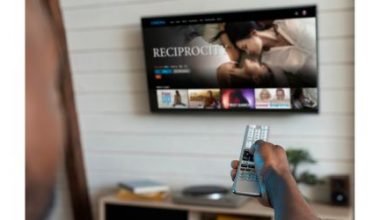Have you ever walked by a store and gotten a notification about a sale or special deal? That’s not random—it’s thanks to something called geofencing advertising platforms. I remember the first time it happened to me. I was near my favorite coffee shop, and an ad popped up for a “buy one, get one free” deal. Of course, I couldn’t resist, so I went in and got a latte. It felt almost like the coffee shop had read my mind, offering me a deal I didn’t know I need
Geofencing Advertising Platforms works by creating virtual boundaries around a location. When someone enters that area, they can get ads that are super relevant and perfectly timed. Whether you want more people to visit your store, increase sales, or stay ahead of the competition, geofencing can help you do it.
But what exactly is a geofencing advertising platform, and how can it make your marketing better? In this article, we’ll break it all down—what it is, why it works, and how to choose the right one for your business.
Key Points:
- What is Geofencing Advertising?
Geofencing advertising uses virtual boundaries (called geofences) to send ads or notifications to users based on their location. - Why Do Geofencing Advertising Platforms Matter?
These platforms help businesses show ads based on a user’s location, making the ads more relevant and increasing engagement, driving more traffic, and offering a personalized experience. - Examples of Platforms:
- GroundTruth: Targets customers by tracking their movement and foot traffic.
- Reveal Mobile: Offers custom geofences and in-depth performance analysis.
- Blis: Uses location and customer behavior data to improve targeting.
- Foursquare Ads: Leverages vast location data to optimize campaigns.
- Simpli. fi: Provides accurate geofencing with detailed analytics.
- When to Use Geofencing: Geofencing is useful for industries like retail, tourism, airports, real estate, fitness centers, and events.
- Benefits:
- Reaches the right people at the right time.
- Makes ad spending more efficient.
- Delivers measurable results.
- Increases customer engagement.
- Works for both small businesses and large companies.
What is Geofencing Advertising?
Geofencing advertising is a marketing method that uses location-based technology to set up virtual boundaries, called “geofences,” around certain areas. When a person with a location-enabled device, like a smartphone, enters one of these areas, they can receive targeted ads, notifications, or special offers.
What are Geofencing Advertising Platforms?
Geofencing advertising platforms are tools that help businesses send ads to people based on their physical location. These tools use technology like GPS, Wi-Fi, or Bluetooth to set up virtual boundaries around places like stores or events. When someone enters or leaves these areas, the platform sends them ads or notifications on their phone.
Key Features of Geofencing Advertising Platforms:

#1. Setting Up Geofencing:
Businesses can create virtual zones around places like stores, event venues, or neighborhoods. The platform uses location data to set these boundaries.
#2. Targeted Ads:
When a customer enters one of these areas, the platform can send ads directly to their phone or device. These ads could include special offers, event promotions, product suggestions, or reminders.
#3. Real-Time Notifications:
Geofencing platforms send instant notifications, so businesses can engage with customers as soon as they arrive at a location.
#4. Data and Insights:
These platforms track how customers behave, such as how often they visit, how they interact with ads, and whether they make a purchase. This helps businesses see how well their campaigns are working and make improvements.
Geofencing Advertising Platforms
These tools work for many businesses, from local shops to large companies. They help create personalized ads based on where people go, making it easier to connect with the right audience and run successful campaigns.
#1. GroundTruth:
GroundTruth is a location-based advertising tool that helps businesses reach local customers. It uses precise geofencing to show ads to people based on where they go. For example, a coffee shop can target people who recently visited a competitor by offering them a discount to try their coffee. It also tracks foot traffic so businesses can see how well their ads are working.
#2. Reveal Mobile:
Reveal Mobile focuses on geofencing and location-based ads. Its tool, “VISIT Local,” lets businesses create custom geofenced areas and track who visits them. For instance, a gym can target people who visit nearby fitness centers with ads for a free trial. The platform also gives detailed reports to measure how well the ads are performing.
#3. Blis:
Blis combines location data and audience insights to help businesses reach specific customers. For example, a clothing store can target people who often visit malls by showing ads for sales or new arrivals. I found that Blis gave me great targeting options for my jewelry business, allowing me to reach customers who were already in the mindset of making a purchase. Blis also tracks real-world results, like how many people visit a store after seeing an ad.
#4. Foursquare Ads:
Foursquare uses its large database of location information to help businesses run targeted ad campaigns. It shows ads based on where people are or where they’ve been. For instance, a travel agency can target people who recently visited an airport with vacation deals. Foursquare also provides data on foot traffic to improve ad strategies.
#5. Simpli.fi:
Simpli.fi is a tool for programmatic ads and detailed geofencing. Businesses can draw custom geofences around specific places like buildings or neighborhoods. For example, a pizza shop can target people nearby with ads for special deals. Simpli.fi also tracks results, like how many people visit a website or store after seeing an ad.
#6. Geomarketing by Uberall:
Uberall’s Geomarketing tool combines geofencing with location-based marketing. It sends real-time offers to people when they enter a geofenced area. For instance, a beauty store could alert nearby shoppers about a flash sale. Uberall also helps businesses manage online reviews and listings, making it an all-in-one marketing tool.
#7. Adventrix:
Adventrix offers geofencing for small and medium-sized businesses. It focuses on local targeting, helping businesses reach customers within a certain area. For example, a car wash can target drivers nearby with special offers. Adventrix also works with social media platforms to reach more people.
#8. AdTheorent:
AdTheorent uses AI and geofencing to deliver highly personalized ads based on location and behavior. For example, a healthcare provider could target people who visit gyms or health stores with ads about wellness programs. AdTheorent stands out by predicting which customers are most likely to respond to the ads.
Examples of How Geofencing Advertising Can Be Used:
#1. Car Dealerships:
A car dealership can set up a geofence around other dealerships or busy areas. When someone enters the geofenced area, they might get offers for test drives, discounts, or special deals to encourage them to visit the dealership.
#2. Tourism and Travel:
Tourism companies can use geofencing to send special offers to tourists at popular spots. For example, when a tourist enters a landmark, they could receive a notification with deals for tours, local activities, or restaurant discounts.
#3. Airports:
Airports can send notifications to passengers about flight changes, gate updates, or shopping offers through geofencing. Travelers within the airport could get discounts on food, souvenirs, or services to improve their experience.
#4. Fitness Centers:
A gym can set up a geofence around its location to send workout offers, membership deals, or reminders to people nearby. This can encourage them to stop by or join a fitness class.
#5. Real Estate:
Real estate agents can create geofences around neighborhoods or new housing areas to send ads to potential buyers. If someone enters the area, they might receive notifications about open houses, property listings, or price drops.
#6. Concerts and Events:
Event organizers can use geofencing to promote upcoming events. For instance, a concert promoter could send special ticket offers or VIP passes to people entering a geofenced area near the venue.
These examples show how geofencing can help businesses reach people in real time based on their location, across many industries.
Benefits of Geofencing Advertising Platforms
Geofencing advertising platforms offer plenty of great benefits, making them a powerful way for businesses to boost their marketing efforts.
Here are a few of the benefits:
#1. Reaching the Right People:
Geofencing lets you target customers in a specific location. This means your ads go to the people who are most likely to visit your business. For example, if you run a coffee shop, you can show ads to people within a mile of your shop, increasing the chance they’ll stop by.
#2. Real-Time Connection:
With geofencing, your ads can pop up right when people enter or leave a particular area. This is a great way to grab their attention when it matters most. For example, a clothing store might send a “20% off today only” message to someone walking past the store.
#3. Getting More for Your Money:
Geofencing helps you focus your advertising on people who are more likely to respond, so you don’t waste money showing ads to the wrong audience. For instance, if you run a shop in a busy mall, you can target frequent mall visitors, increasing your chances of making a sale.
#4. Making Ads Feel Personal:
When ads are timely and relevant, they feel more helpful and less like spam. For example, if a traveler arrives at an airport, they might see an ad for a nearby hotel or car rental service. This kind of targeted messaging makes the ad useful and more likely to get a response.
#5. Learning About Your Customers:
Geofencing platforms can track where customers go and how often, giving you valuable information about their habits. This helps you understand what works and what doesn’t in your marketing strategy.
#6. Perfect for Events:
Geofencing is great for event promotion. You can send ads to people before, during, or after an event. For example, a concert venue might remind people near the area about last-minute tickets.
#7. Stay Ahead of the Competition:
Geofencing can even help you target customers near your competitors. For instance, if you own a restaurant, you could send a “10% off your meal today” ad to people near a rival restaurant, tempting them to choose you instead.
#8. Works with Other Platforms:
Geofencing often works with tools like social media and search engines. This way, your ads stay consistent across platforms, reaching people wherever they spend their time online.
#9. Good for Businesses Big or Small:
Whether you’re a small local business or a big national brand, geofencing can work for you. A local bakery could target nearby neighborhoods, while a global chain could run campaigns across multiple cities.
#10. Easy to Measure Success:
With geofencing, you can track how well your ads are doing. For example, you can see how many people clicked on your ad, visited your store, or even made a purchase. This data helps you improve future campaigns.
Plan Your Geofencing Strategy with Ease
Geofencing campaigns can be difficult and stressful especially for beginners. Here is a Geofence Design Map Template designed to help you plan and manage your strategy without the hassle.
This easy-to-use template guides you step by step—from choosing important locations and setting up geofence boundaries to targeting the right audience and tracking your results. Whether you’re running a small business or managing a large campaign, this tool keeps you focused on what matters most: getting great results.
Here’s how it can help:
- Pick the right locations: Add spots like your store, event venues, or even competitor locations.
- Reach your ideal audience: Send messages to the right people at the perfect time.
- Improve your campaigns: Monitor your results and make changes to get the best outcomes.
Feel free to customize it to suit your needs.
How does a geofencing advertising platform work?
These platforms use GPS, Wi-Fi, or Bluetooth to track when users enter a geofenced area and deliver ads or notifications.
What industries benefit most from geofencing advertising?
Industries like retail, hospitality, tourism, real estate, fitness, events, and airports benefit greatly from geofencing.
Can small businesses use geofencing effectively?
Yes, small businesses can target local customers, making it a cost-effective way to drive foot traffic and increase sales.
Are geofencing ads intrusive?
When used properly, geofencing ads are timely and relevant, making them feel helpful rather than intrusive.
Can geofencing work with other marketing strategies?
Yes, geofencing can be integrated with social media, email campaigns, and search engine ads for a more effective marketing approach.
General Conclusion
Geofencing advertising platforms are powerful tools that help businesses target customers based on their location. This ensures that the ads are relevant, timely, and personal. By focusing on the right audience, geofencing improves marketing efficiency and provides useful insights to enhance campaigns. Whether for small local businesses or large companies, geofencing is a great way to increase foot traffic, engage customers, and boost sales.
Related Articles:
- Top 10 Display Advertising Platforms for Effective Campaigns
- How to Choose the Right Advertising Platform for Your Brand
- Top 10 Programmatic Advertising Platforms for Maximum ROI






